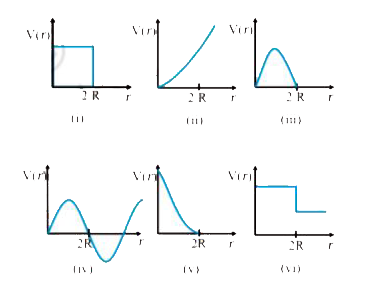Complete Solutions to EXERCISES (ADDITIONAL EXERCISES) of chapter WORK, ENERGY AND POWER of Class 11 book with complete answers and questions
| Class 11 | PHYSICS |
| Chapter | WORK, ENERGY AND POWER |
| NCERT TELUGU | EXERCISES (ADDITIONAL EXERCISES) |
| Number Of Questions | 6 |
| Academic Year | 2023-24 |
A bullet of mass `0.012kg` and horizontal speed `70 ms^(-1)` strikes a block of wood of mass `0.4kg` and instantly comes to rest with respect to the block. The block is suspended from the ceiling by means of thin wires. Calculate the height to which the block rises. Also, estimate the amount of heat produced in the block.
View SolutionTwo inclined frictionless tracks, one gradual and the other steep meet at A from where two stones are allowed to slide down from rest, one on each track (Fig. 6.16). Will the stones reach the bottom at the same time? Will they reach there with the same speed? Explain. Given `theta_(1)= 30^(@), theta_(2)= 60^(@)" and "h= 10m`, what are the speeds and times taken by the two stones?

View SolutionA 1 kg block situated on a rough incline is connected to a spring of spring constant `100 Nm^(-1)` as shown in Fig. 6.17. The block is released from rest with the spring in the unstreched position. The block moves 10 cm down the incline before coming to rest. Find the coefficient of friction between the block and the incline. Assume that the spring has a negligible mass and the pulley is frictionless.

View SolutionA bolt of mass `0.3 kg` falls from the ceiling of an elevator moving down with an uniform speed of `7 ms^(-1)`. It hits the floor of the elevator (length of the elevator = 3m) and does not rebound. What is the heat produced by the impact? Would your answer be different if the elevator were stationary?
View SolutionA trolley of mass 200 kg moves with a uniform speed of 36 km/h on a frictionless track. A child of mass 20 kg runs on the trolley from one end to the other (10 m away) with a speed of `4 ms^(-1)` relative to the trolley in a direction opposite to the its motion, and jumps out of the trolley. What is the final speed of the trolley? How much has the trolley moved from the time the child begins to run?
View SolutionWhich of the following potential energy curves in Fig. 6. 18 cannot describe the elastic collision of two billiard balls? Here r is the distance between centres of the balls.

View Solution
EXERCISES (ADDITIONAL EXERCISES) questions and complete solutions for chapter WORK, ENERGY AND POWER of NCERT PHYSICS(TELUGU) of Class 11